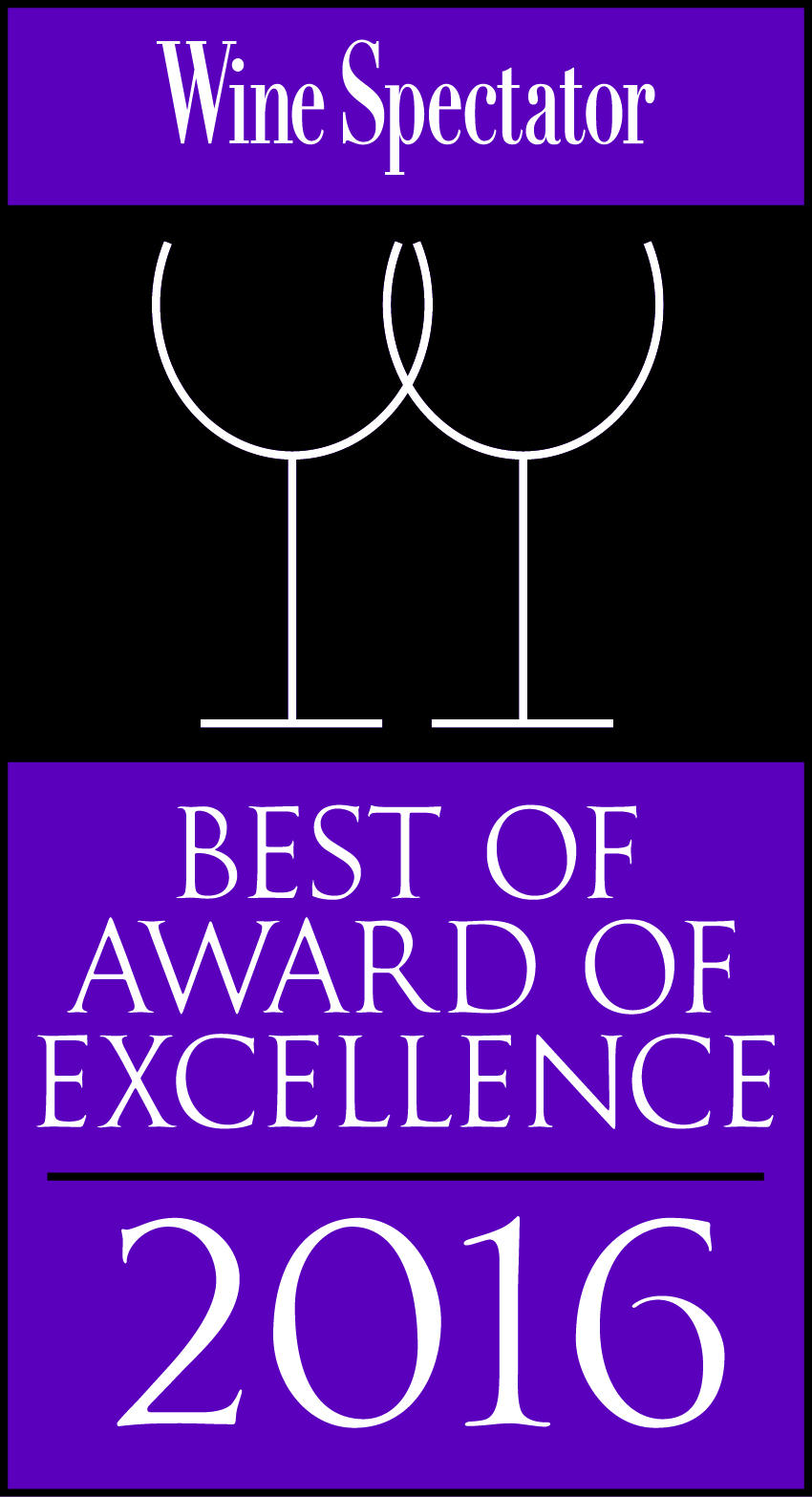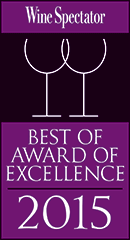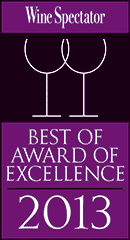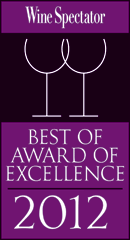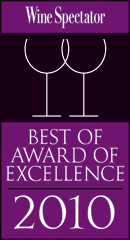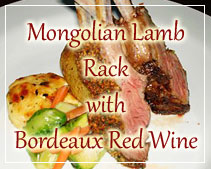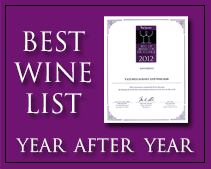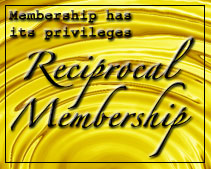Things to know about sweet wine
Date: December 25, 2010
About Dessert Sweet Wine
Best wine supplier in Philippines discusses wine related topics
Sweet wines, like disingenuous youth, are often misunderstood, maligned, patronized, and dismissed as a passing phase. Blame it on bad PR, misguided marketing, or historic winemaking indiscretions, but sweet wines have been given short shrift and often relegated to the tail-end of the dinner to accompany that molten chocolate cake. Fair enough. There’s absolutely nothing wrong with a glass of slightly chilled glass of heady Banyuls from the southern Mediterranean area of France. But they are something more than so-called, dessert wines, they’re not all just grape candy in a glass, many being caught somewhere in the middle between a dry wine and dessert. No, these wines that have endured since the beginning of winemaking, are contemplative in complexity, good ones torturous to produce, and lush in their diminutiveness. Dessert wines with a pear tartin? Maybe, but sweet wines can be a just dessert unto themselves or something completely different. Sweetness in a wine is often frowned upon by wine drinkers, a trait perhaps indicating a lack of sophistication or an element of inferiority. Get with the program people
Sweetness as a Defining Characteristic
Wines can be dry, medium dry, medium, and ultimately, sweet with the level of residual sugar (RS) determining the classification. Residual sugars are the remaining amounts of sugar in the wine after final fermentation. RS is most often measured as grams/liter (g/l) with the very sweet wines weighing in at 45 g/L and above, some way above. Dry wines will be about 2.5 g/L or less. The sweetness taste factor is mitigated by other wine components such as acidity, tannins, alcohol, and temperature. Often a sweet wine is balanced by the wine’s acidity. An example is the floral and honeysuckle Vouvray from France’s Loire Valley. Made from Chenin Blanc, white Vouvray wines can have healthy doses of sweetness but the wine’s acidity tempers the sweetness and gives it a dry character and makes it a perfectly legitimate mate to a meal rather than dessert. Conversely, infuse a high alcohol percentage into the wine will make a dry wine seemingly sweet, sweet as a Zinfandel Fruit Bomb.
Types of Sweet Wines
The best sweet wines are made in one of two ways. One way is to dehydrate the grapes and reduce their water content and concentrate the sugars. A second way is to boost the alcohol as is done to make fortified wines such as Port and Sherry. The following is background on the these types of wines:
• Botrytis – In the common vernacular this is Noble Rot, a fungus that is a disaster for wine growers trying to make a dry table wine. However, it produces a sigh of relief for those trying to make sweet wines. Essentially, the botrytis cineria is a spore-like fungus that attack healthy grape clusters in the late autumn and grows, feeding on the grape’s sugars. Damp nights and warming days helps to dry the grapes and prevents total decomposition. The resulting epitome can be found in those marvelous Sauternes from Bordeaux (Think Chateau d’Yquem), the Tokaji from Hungary, and the Auslese or Beerenauslese from Germany’s Rheingau.
• Eiswein – German for Ice Wine these wines are made from frozen grapes. These grapes are picked during a hard frost and frozen. When the frozen orbs are pressed the sugar concentrated juices are separated from the grape’s icy water. Because grapes for Eiswein’s are picked very late in the season while waiting for winter’s chill, the grapes are very ripe and produces captivating sweet white wines with extracted fruit and high acidity that make them excellent with food. Eisweins are also produced in Canada and Austria.
• Late Harvests – Simply, grapes are left on the vines in the late autumn to ripen to their fullest. The grape clusters can be left to dry on the vines, picked and dried indoors or just laid down on the vineyard ground to shrivel in the sun and do their best impression of a raisin. Late Harvest wines are not usually as complex as Noble Rot or Eisweins but they are full of sticky honey, deep fruit flavors, and floral bouquets.
• Fortified Wines – Neutral grape spirits such as brandy are added to the wines during fermentation which arrests the process, kills the sugar consuming yeast, and holds the RS level while giving the wine an alcohol boost upwards to 18-20%. A small glass of a fortified wine goes a long way. Examples of this process are Port from Portugal and Banyuls, Muscat de St. Jean de Minervois, and Maury from France’s Languedoc-Roussillon region.
Dometic Wine Cabinets – Wine storage in complete silence & vibration free. Learn more & buy! www.RosehillWineCellars.com
Essential Wine Tasting – The ultimate ‘cheat sheet’ used by wine professionals worldwide. www.EssentialWineTastingGuide.com
Dry Ice Production – IceMaker from IceTech Production of high quality Dry Ice pellets www.icetechworld.com
Types of Grapes
Sweet wines are made with grapes from all over the varietal board, red or white. Here are a handful of the most common with some associated sweet wines:
• Sémillon (Primary grape for Bordeaux Sauternes)
• Viognier
• Chardonnay
• Chenin Blanc (Vouvray and Savennières-Loire Valley)
• Riesling (Alsace and Rheingau)
• Gewürtztraminer (Alsace and Rheingau)
• Muscat/Moscato (Moscato d’Asti, Muscat d’Alsace, Muscat de Beaumes-de-Venise, Muscat Cannelli)
• Trebbiano (Vin Santo-Tuscany)
• Furmint (Primary grape for Hungary’s Tokaji Aszú)
• Grenache (Banyuls, Maury)
• Zinfandel (Late Harvest Zinfandel/California)
Sweet Wines and Food
The first thing to remember is there are no hard and fast rules when pairing food with wines. In fact, people can get overly vexed and start throwing a pox upon everyone’s house trying to figure out what works perfectly with a certain wine or a particular food. Relax, lighten up. That said, there are a couple of guidelines that can help. Salty foods contrast nicely with acidic wines but then they also contrast nicely with sweetness. When trying to match a sweet or dessert wine with dessert, it’s best to match a sweet wine with a dessert that downplays the sugar, say a honeyed Muscat Canelli together with an apple tart. Wine and food are also similar to the class structure in society. Therefore it always helps to pair up richness with richness. As you know, rich foods don’t like to intermingle with wines from across the tracks and vice versa.
Intriguing Treats
Okay, here are a few sweet wine and food hook-ups that never fail.
• Foie Gras with Sauterne
This is a classic bit of decadence with the fatty-rich foie melting in your mouth and cranked up by complex honey-acid grandeur of the Sauterne. If this combination doesn’t convert you then skip the foie and stick with the Sauterne by itself or nibble on some dry and crumbly blue-veined cheese. If the Sauterne is too pricey, as an alternative try a Jurançon (Not the Sec version) from the Pau region in the French Pyrenees.
• Stilton and Port
This combination works for some people but others forego the Stilton and just drink the Port. Works for me.
• Chocolate and Wine
This is a tough category but people keep trying to find the perfect match. Granted its difficult but sometimes it works. Personally, I stick to bittersweet chocolate (Valrhona) and the darker the better and share it with a Late Harvest Riesling, Late Harvest Zinfandel, Banyuls, or Port. Many people like to try it with Cabernet Sauvignon as well. Best to keep the wine sweeter than the chocolate and the stronger the chocolate then the wine should follow suit.
• Marcona Almonds and Sherry
I love to munch on roasted Marcona almonds from Spain and sip a nutty Oloroso or Cream Sherry.
There are countless options, many yet discovered. When in doubt what goes with that glass of Maury, try sipping the wine first and see if something comes to mind. If nothing materializes take pleasure where you find it.
Source: http://wine.lovetoknow.com/wiki/Sweet_Wine
Are these articles useful for enhancing your wine and dine experience in the Philippines. Do they also help you with travel, leisure, vacation, dining out, nightlife and other leisure activities plans in Manila and other major cities of Philippines? Yats Restaurant hopes to provide you with ample information so you can plan your trips to Pampanga Angeles City Clark Freeport Zone whether you are travelling from Manila or other Asian countries such as Hong Kong, Shanghai, Singapore, Malaysia or Korea.
Restaurant reservations in Manila Philippines, planning of menu, selection of wine for dinner and booking a private function and event in Angeles City Clark Freeport Zone can all be handled. Yats Restaurant and Wine Bar has been regarded by many to be the premier restaurant north of Manila Philippines. Its 3000-line award-winning restaurant wine list has kept many wine lovers happy dining in this restaurant in Angeles City Clark Philippines for over a decade.
Yats Restaurant and Wine Bar was built by Hong Kong-based Yats International in 2000 to provide a world-class cozy fine dining restaurant, business meeting facilities and venues for private dinners and functions in Pampanga Angeles City Clark Freeport Zone. Pampanga Angeles City Clark Philippines was selected for this restaurant because of safety, clean air, absence of traffic and proximity to Manila and Subic.
For comments, inquiries and reservations, email Restaurant@Yats-International.com or call these numbers:
(045) 599-5600 0922-870-5178 0917-520-4401
Http://www.YatsRestaurant.com
Getting to this fine dining restaurant of Angeles City Clark Freeport Zone Pampanga Philippines
How to get to this fine-dining restaurant in Clark Philippines? Once you get to Clark Freeport, go straight until you hit Mimosa. After you enter Mimosa, stay on the left on Mimosa Drive, go past the Holiday Inn and Yats Restaurant (green top, independent 1-storey structure) is on your left. Just past the Yats Restaurant is the London Pub.
Restaurant waiters and servers aspiring to become good sommeliers in Philippines strive to earn a spot to train at the best wine restaurant in Philippines. Yats Restaurant and Wine Bar is well regarded by restaurants in Manila and Pampanga to be the best place to train to become a wine steward or sommelier. Yats is the only restaurant in the Philippines to earn the prestigious Best of Awards of Excellence for offering one of the best restaurant wine lists in the world.
